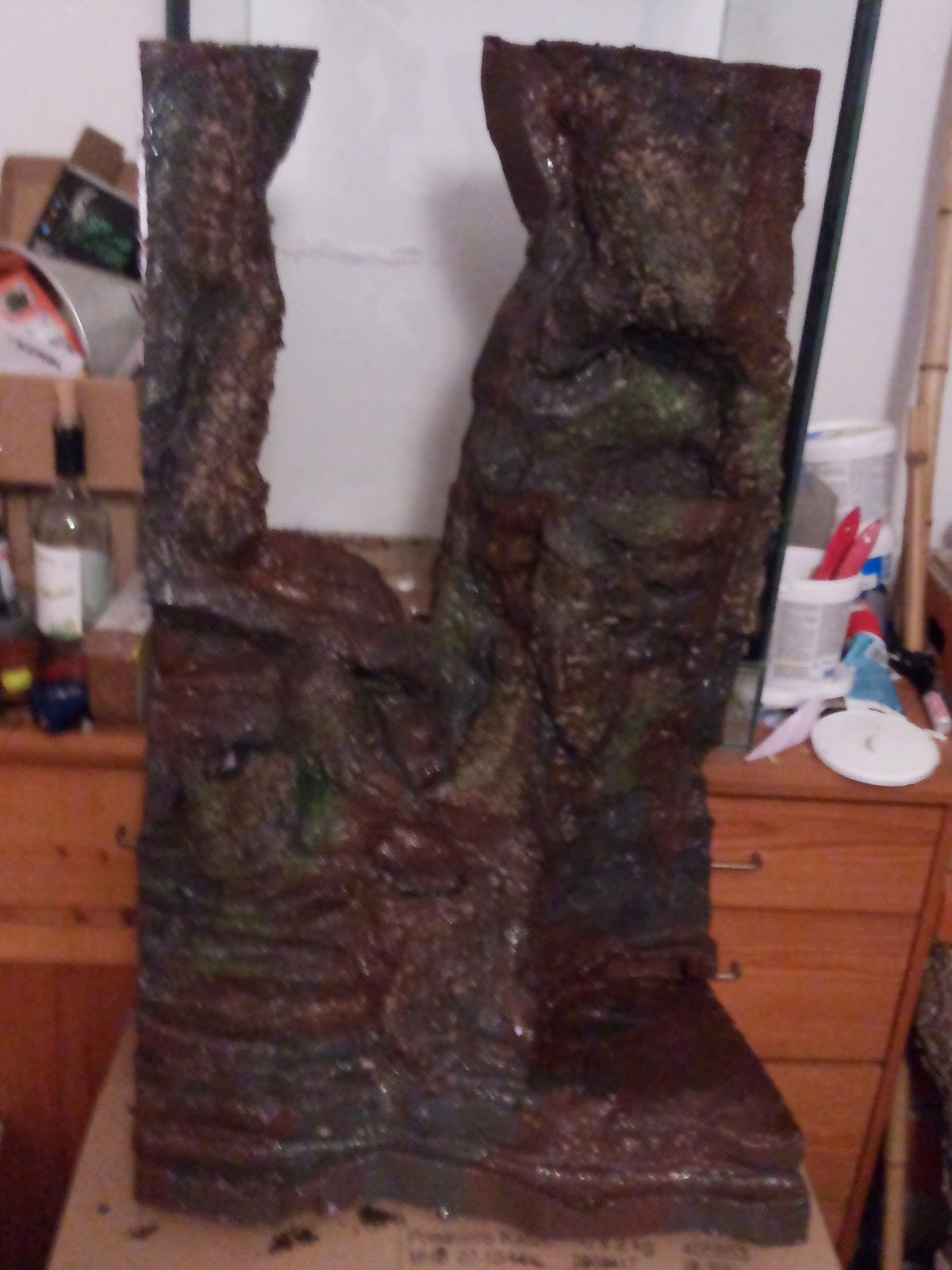1 Background Design
I have decided to make a backgroud based on styrodur plates and some natural materials.
Finally everything is coated with epoxide rasin to avoid any accidents regarding mold or anything alike. This terrarium should simulate rainforest conditions, and thus should work out long time with high air humidity.
1.1 Build a base
I have build up a 1st rough form of my background wall, made from styrodur plates (40-50mm thick). All of the forms were cut out and assembled using styropor glue.
Regarding the waterfall kit, I have left some space at the right side, and made a cavity to receive the cable length necessary to handle the upper part of the waterfall (You'll need to remove and replace the lower water reservoir part frequently). The main part of the waterfall cable is lead at the right backside of the background, cut a way as necessary.
Note:
The sizes of the whole construct should be dimensioned that you can still put it in/out from the glass corpus!
1.2 Model the Base
The first step is to model the assembled styrodur plates using a hot air fan. You should experiment with the materials reaction to your particular fan's settings (mine has a temperature varying from 100-800°C) with a dropped out piece.
Note:
You should not use the hot air fan inside the glass corpus! There's danger to hit the glass with the hot air beam and break it!
Second step after melting the styrodur ground, is to smooth it and apply pieces of natural cork bark. I have used tile adhesive to do this. Partially with a brush and thinned with water.
Some of the cork bark pieces I had cut out as a (hollow) half cone from a whole branch cylinder, that they can be used as planting bays later.
1.3 Color and Seal
To color the base model I have used water based dispersion and acrylic color, mainly dark brown, sap green and dark grey.
Note the nice effects of brushing over the dried surface with light ocre highlights.
After the first coloring the background was all over sealed with epoxide resin.
To avoid the glossy effect of the epoxy and make a better growing ground for moss, I have flock coated the wet resin with coconut fiber substrate.
1.4 More Decoration
I decided to have a bit more (artificial) decoration applied to my background and bought an
ExoTerra Jungle Vine to build a realistic looking simulation of a liana root or s.th. similar.
If I had the knowledge of the material, I had after cutting it to pieces I may have decided the price isn't worth it :-(. OK, it's all mainly amenable wire coated with a paper corpus and a color + whatever mix surface (which easily breaks on bending).
I have used the stuff mentioned above though of course. I have cut off the 'Jungle Vine' into 3 main pieces and added drilled roles of newspaper, coated with (thick) color. The connection points of 'vine sprouts' were adapted using some of the styropor glue leavings.
The additional vine decorations were sealed with epoxide resin, and flocked with coconut fiber substrate and
other material again (to substitute the
"other material", you might consider coloring the coconut fiber substrate yourself).
That's what it looked all about in "full light" after the above steps.
When I placed the whole ensemble into the glass corpus I also stuffed the (necessary for maneuvering) gaps at the sides left and right.
Finally these gaps and all of the gaps to the glass corpus were sealed with silicone.
Read about lightning, humidity control, planting soon ...









 2
2













